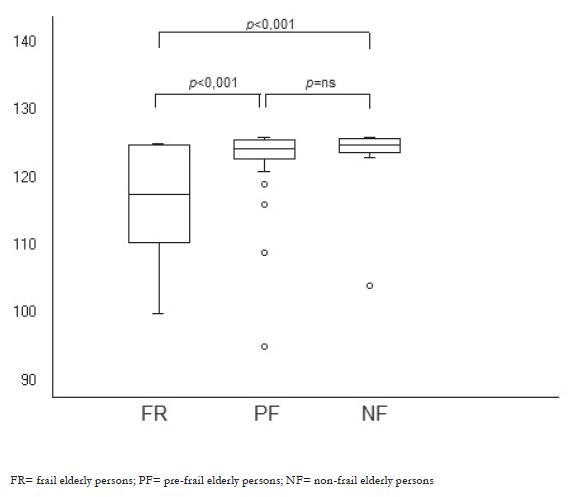Objective
To investigate the occurrence of frailty and analyze the functional capacity and quality of life in the elderly in a department of geriatrics and gerontology in Belém-PA.
Method
Cross-sectional, descriptive and analytical study.103 elderly people were assessed as the socio-demographic and clinical aspects, frailty, according to the phenotype of Fried, history of falls, self-perceived health, functional capacity (FC) and quality of life (QOL). The elderly were classified as frail (FR), pre-frail (PF) and non-frail (NF). The groups were compared using the binomial test, Kruskal-Wallis test and ANOVA test, and the relationship between FC and QOL through Pearson correlation.
Results
The mean age was 73.39(±6.42) years; 23.0% of the elderly were FR, 57.0%were PF and 20.0% were NF. The highest criteria of phenotype were muscle weakness and physical inactivity. Was no difference in FC between FR and PF (p<0.01) and FR and NF (p<0.01). The FR elderly had lower QOL and the highest scores were intimacy (15.33±2.26) and death and dying (14.88±3.26). There were correlation between FC and QOL in groups PF (p=0.0273) and NF (p=0.0017). 62.1% of seniors pointed to health as regular and 34.0% had a history of falling.
Conclusion
Muscle weakness and physical inactivity were most striking in the development of frailty, which was associated with worse QOL and FC, despite most seniors be independent. These data are important for early detection of determinants of frailty, since the criteria discussed here are reversible.
Frail Elderly; Quality of Life; Health of the Elderly


